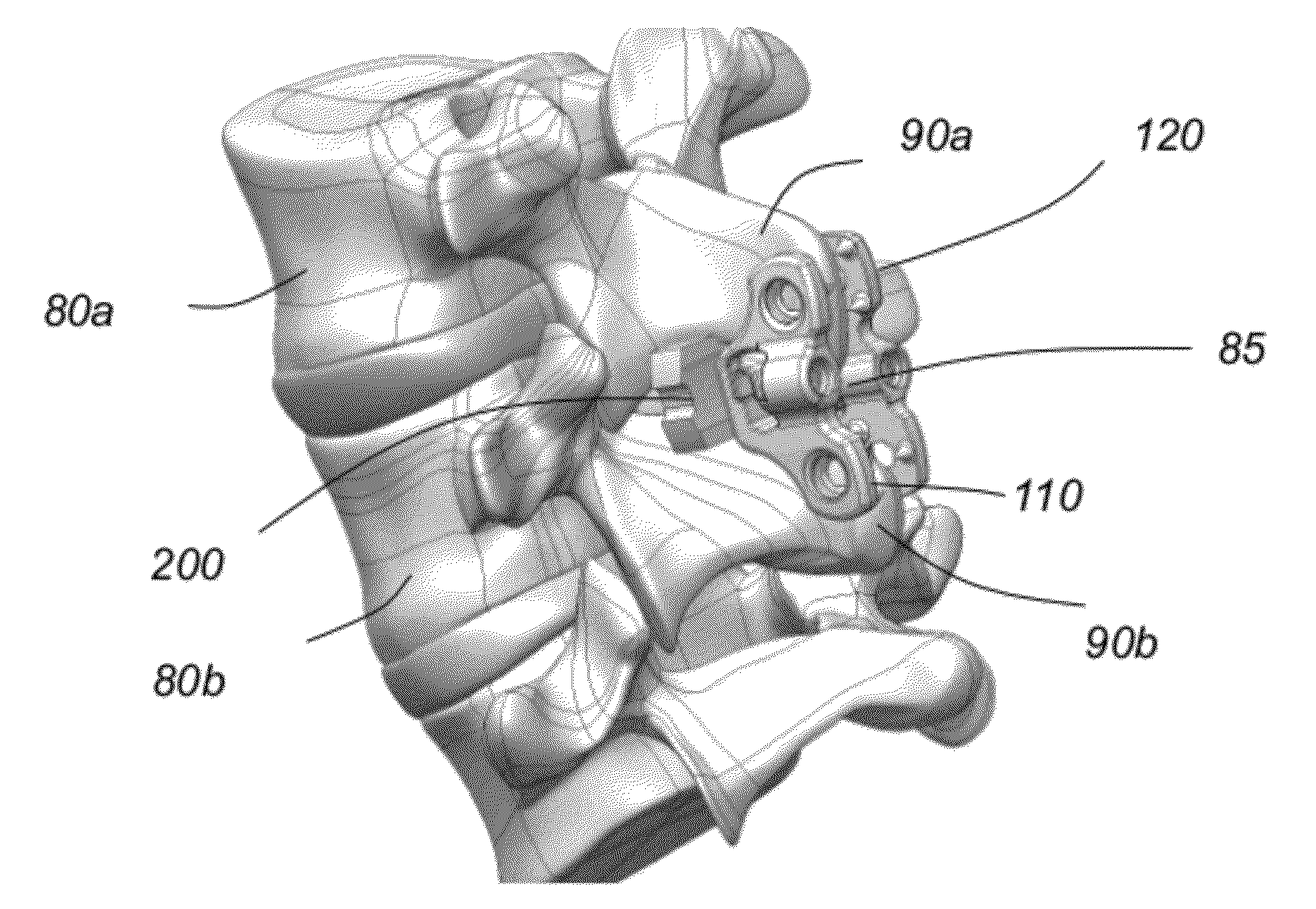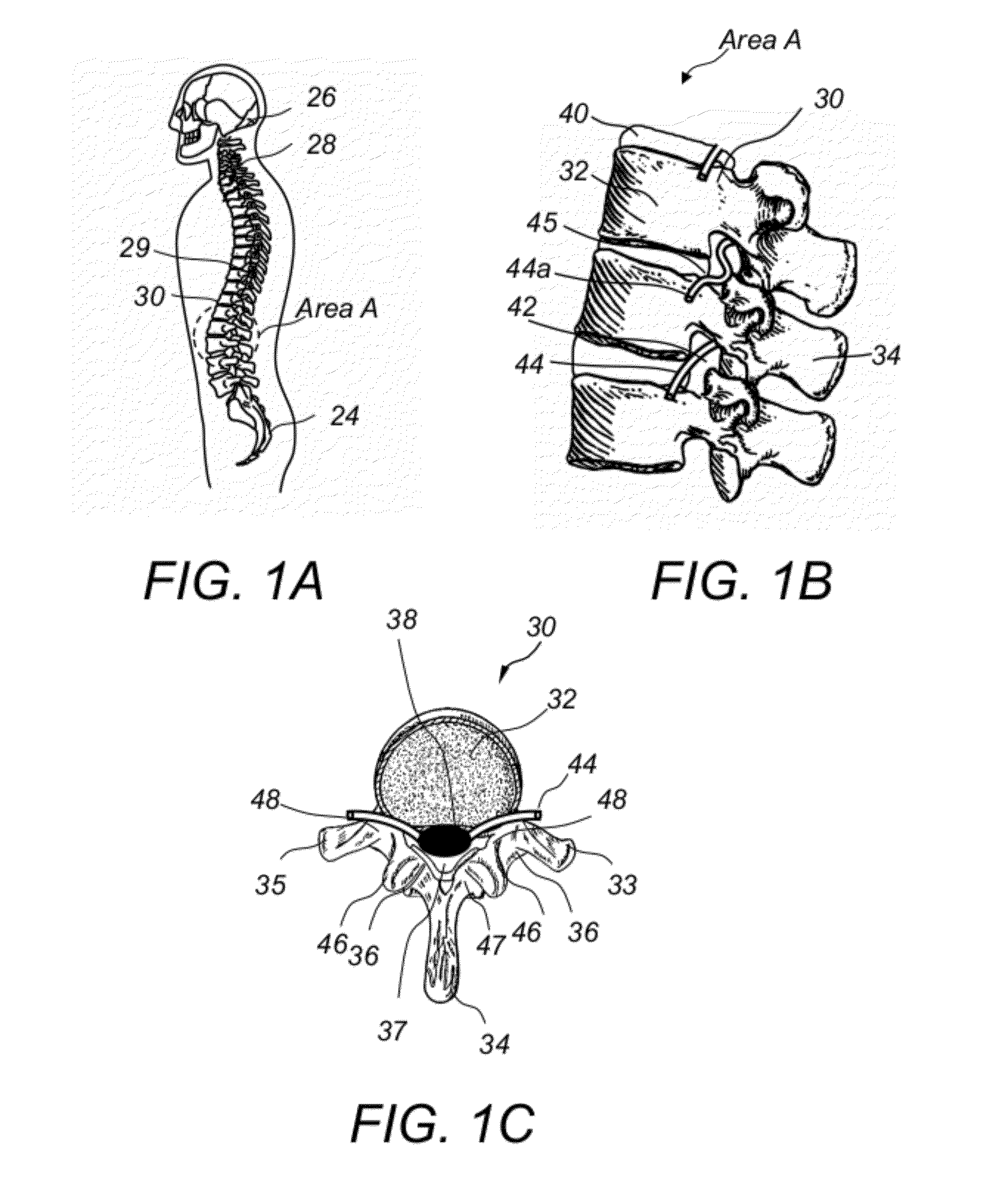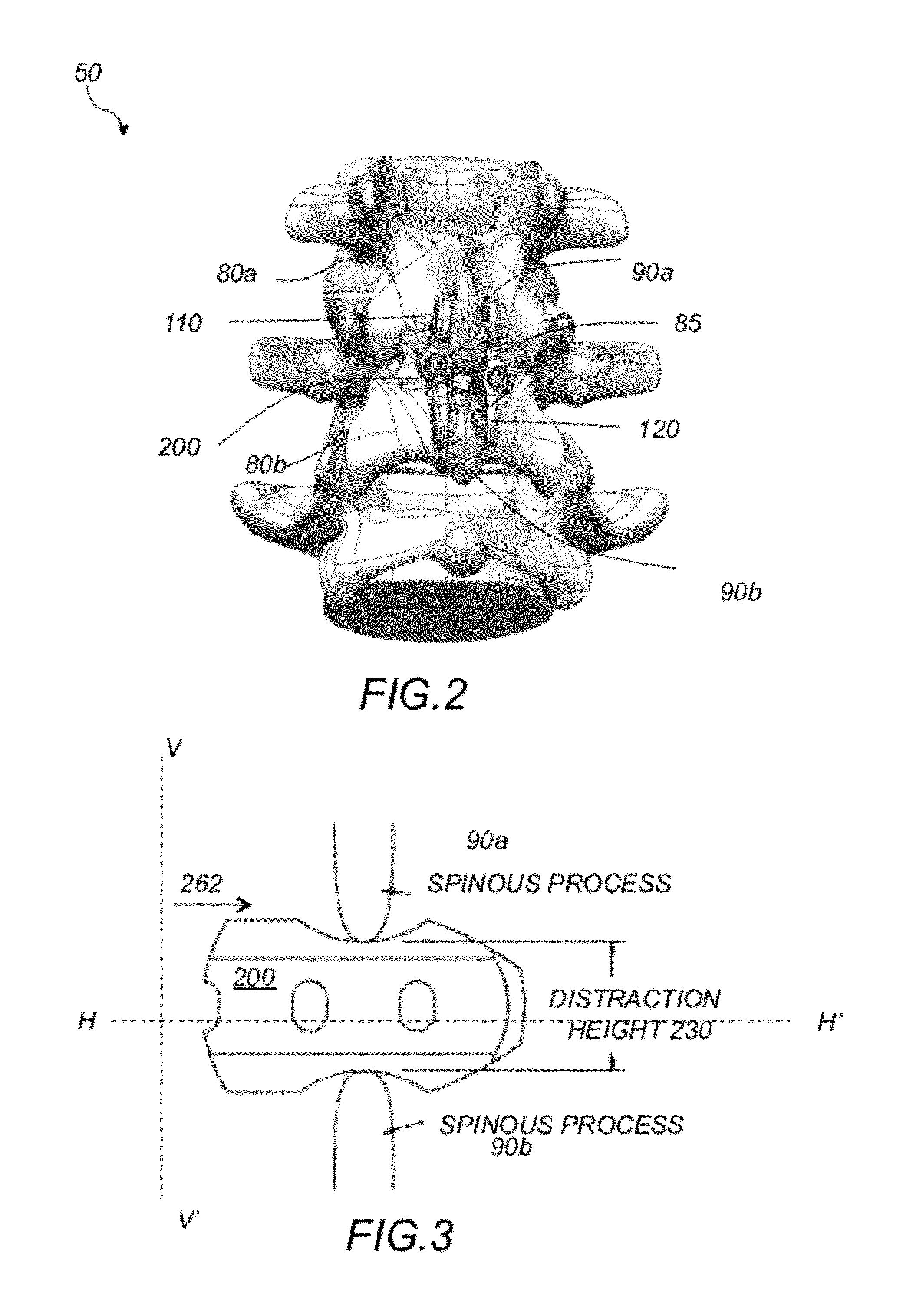Interspinous spacer implant
a spacer implant and implant technology, applied in the field of interspinous spacer implants, can solve the problems of limiting the access to the pars and transverse processes, unsatisfactory decortication, and large amount of blood loss, and achieve the effect of stabilizing vertebrae and promoting bone growth
- Summary
- Abstract
- Description
- Claims
- Application Information
AI Technical Summary
Benefits of technology
Problems solved by technology
Method used
Image
Examples
Embodiment Construction
[0043]The present invention relates to a system and a method for an improved spinous process fixation implant assembly 50, shown in FIG. 2. The spinous process fixation implant assembly 50 includes a spinous process fixation implant 100 and an interspinous spacer implant 200. The spinous process fixation implant 100 includes elongated first and second components 110, 120, that are arranged opposite and parallel to each other. First and second spinous processes 90a, 90b of first and second adjacent vertebrae 80a, 80b are clamped between the first and second components 110, 120, respectively, and are separated by the interspinous spacer implant 200, as shown in FIG. 2 and FIG. 3.
[0044]Referring to FIG. 4A-4C, spinous process fixation implant 100 includes first elongated component 110, second elongated component 120, top and bottom pins, 180a, 180b, and set screws 140a, 140b. First component 110 includes an elongated body 112 and one integral post 170a. Elongated body 112 has an essent...
PUM
| Property | Measurement | Unit |
|---|---|---|
| width | aaaaa | aaaaa |
| width | aaaaa | aaaaa |
| thickness | aaaaa | aaaaa |
Abstract
Description
Claims
Application Information
 Login to View More
Login to View More - R&D
- Intellectual Property
- Life Sciences
- Materials
- Tech Scout
- Unparalleled Data Quality
- Higher Quality Content
- 60% Fewer Hallucinations
Browse by: Latest US Patents, China's latest patents, Technical Efficacy Thesaurus, Application Domain, Technology Topic, Popular Technical Reports.
© 2025 PatSnap. All rights reserved.Legal|Privacy policy|Modern Slavery Act Transparency Statement|Sitemap|About US| Contact US: help@patsnap.com



